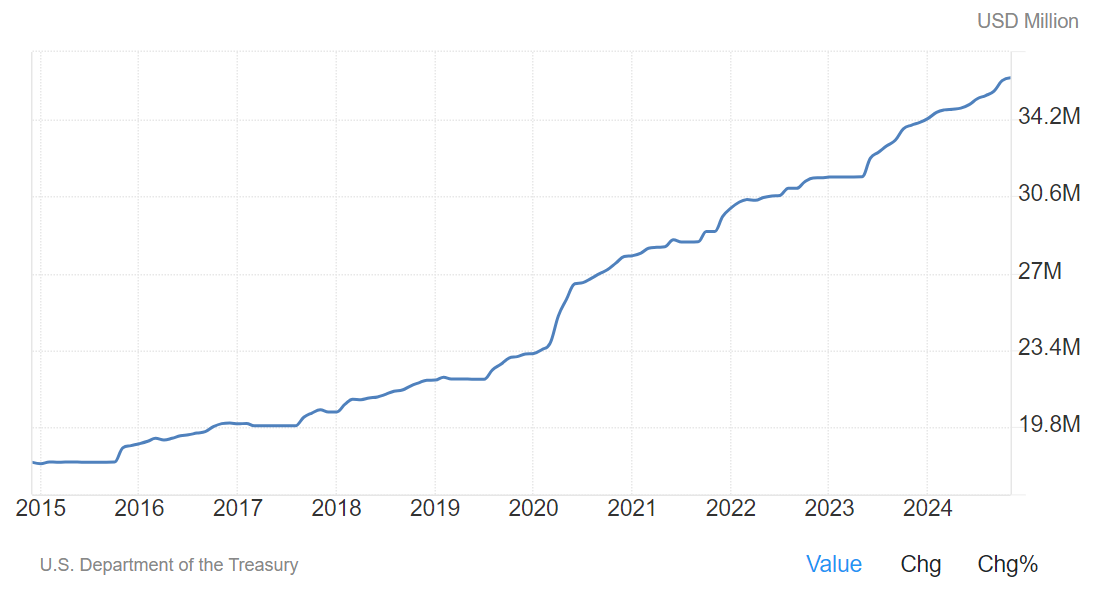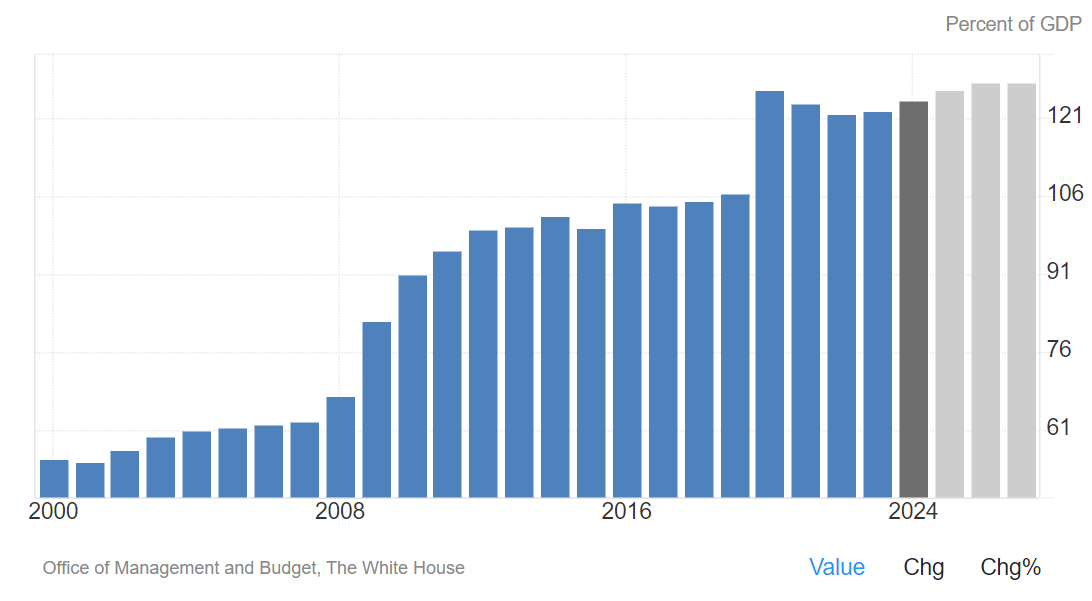Severely damaged US Bonds Market is still facing a major difficulty in 2025?
The U.S. bond market has begun 2025 under a cloud, with a series of complex and intractable debt issues coming up one after the other, casting a thick shadow over the market outlook.
First, a number of debts will mature in the current year.
In terms of debt maturities, up to nearly $3 trillion of U.S. debt is expected to mature in the current year, with short-term debt taking up a sizable portion of this amount, and these maturities account for nearly 10 percent of current government debt.

During the debt rollover operation, the government intentionally extended the maturity of some of the debt in an attempt to optimize the debt structure and alleviate the short-term debt-servicing pressure.
However, there is a prerequisite for this initiative that cannot be ignored, that is, the market must have enough capacity to absorb the huge increase in Treasury issuance brought about by the huge U.S. budget deficit (close to 2 trillion dollars).Once the market is unable to withstand the impact of such a large-scale Treasury issuance, it will inevitably lead to a series of new concerns and problems, and may even lead to turbulence and instability in the bond market as a whole.
In addition, the current structure and scale of Treasury issuance is also not optimistic.
In a normal economic and fiscal environment, the United States Treasury expects short-term Treasury issuance to account for slightly more than 20 per cent of total debt, which is considered relatively reasonable and conducive to maintaining fiscal stability.
However, the reality is contrary to expectations, due to the frequent debt ceiling crisis in recent years, complex budgetary issues and urgent immediate cash mobilization needs and other multiple factors, the proportion of short-term treasury bonds issued by the intertwined influence, there is a clear upward trend.And the current government debt/GDP ratio has remained above 120%.
Data show that during the January-November period of 2024, the total issuance of U.S. Treasuries has soared to $26.7 trillion, an increase of up to 28.5% compared to 2023, a staggering rate of growth that fully reflects the current dire situation facing the U.S. Treasury market.
It is worth noting that this massive short-term Treasury issuance strategy has not gone unchallenged and uncriticized in the past.Earlier in 2024, then-Treasury Secretary Yellen was controversial for her move to issue large amounts of short-term Treasury bonds.Her decision, which was aimed at stimulating economic growth by lowering the cost of financing in the near future, was heavily criticized by Congressional Republicans and renowned economist Nouriel Roubini.Even Besant, the new Treasury Secretary chosen by President-elect Donald Trump, has expressed his displeasure and concern over the approach, arguing that it could pose potential risks and pitfalls to the U.S. fiscal position and bond markets.
Looking further at the volatility of market yields and bond prices, since late September 2024, when the Federal Reserve unexpectedly implemented a 0.5 percentage point interest rate cut, the bond market has been caught up in dramatic volatility.Yields have spiked sharply, while at the same time, Treasury prices have suffered heavy downward pressure.
Specifically, $iShares 20+ Year Treasury Bond ETF(TLT)$ is down more than 11% in 2024, in contrast to the $.SPX(.SPX)$ index, which is up a remarkable 23% over the same period.The contrast is that the $ S&P 500 (.Between this rise and fall, it not only reflects the huge contrast between the bond market and the stock market, but also highlights the dilemmas and losses faced by investors in the bond market.
2025 Bond Market Expectations are Poor
Today, market traders are widely expecting a reduction in future rate cuts, which is certainly adding insult to injury for the bond market.
With the size of Treasury issuance continuing to flood the market, it is highly likely that the fixed income market will once again struggle and face a new round of challenges.While current projections suggest that the fiscal deficit will be substantially lower in 2025 compared to 2024, this does not mask the significant uncertainty and risk associated with the short-term Treasury adjustment.
This uncertainty is still the most central and key concern of the current bond market, which will continue to affect the confidence of the market and investor decision-making, and become an important constraint on the development of the U.S. bond market in 2025, which will also make the eyes of the global financial market focus on every subtle change in the U.S. bond market, and its subsequent trend is full of variables and unknowns.
Disclaimer: Investing carries risk. This is not financial advice. The above content should not be regarded as an offer, recommendation, or solicitation on acquiring or disposing of any financial products, any associated discussions, comments, or posts by author or other users should not be considered as such either. It is solely for general information purpose only, which does not consider your own investment objectives, financial situations or needs. TTM assumes no responsibility or warranty for the accuracy and completeness of the information, investors should do their own research and may seek professional advice before investing.
- Twelve_E·01-02that’s really tough… it is unsure that whether debt ceiling will be cancelled or notLikeReport
- limzihao03·01-02will probably increased debt ceiling. trump will nver let US fail..LikeReport

